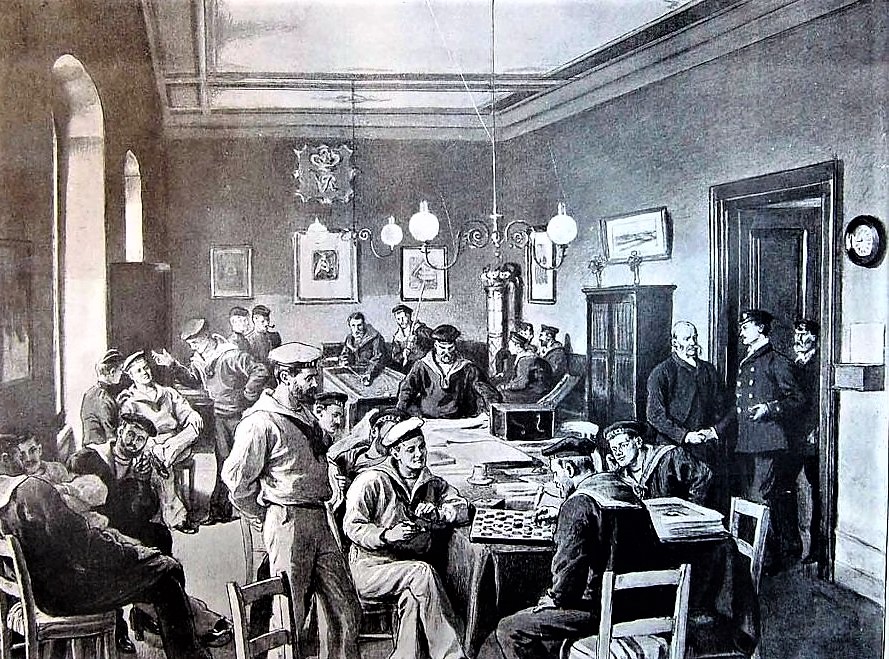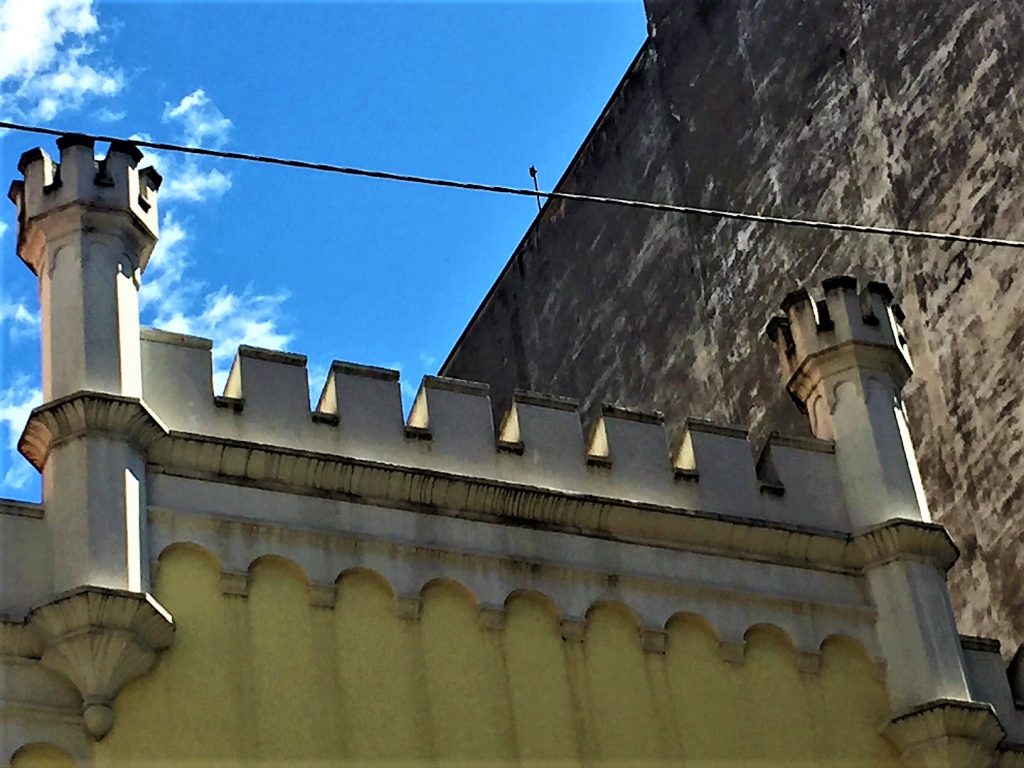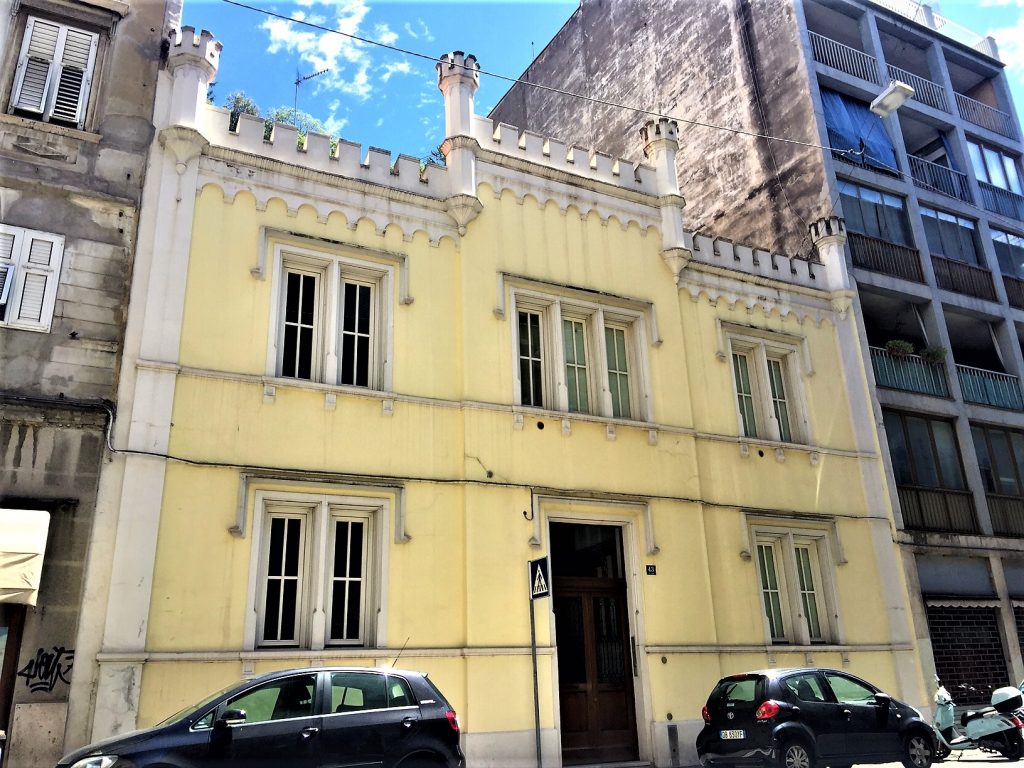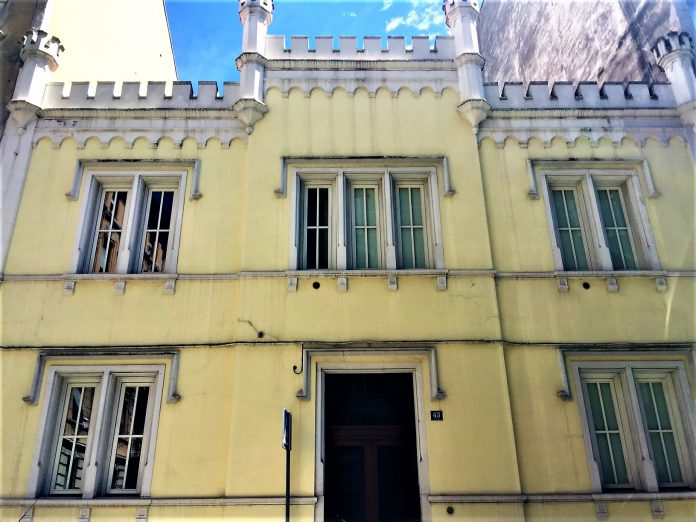by Alessandra Ressa
A castle-like building, located at number 43 on today’s neglected via Udine, used to be the go-to place for British sailors to enjoy a drink or two without embarrassing the large and influential English community of Trieste.
According to British historian Kenneth Baker, in the 1890s almost half of the ships reaching the city’s shores flew the Union Jack. Having a place of containment for the merry and exuberant crews who docked daily in Trieste’s port became a necessity after countless episodes, reported both in the local press and at police stations, in which intoxicated British soldiers and sailors roamed the streets late at night harassing women and starting fights with the locals.
As the English community living in Trieste had enormous economic interests at stake as well as a reputation to preserve, the pressured British Consulate took the decision of confining the troublesome crews into a dedicated building.
In 1895, architect Isidoro Piani was asked to design the British Seaman’s Home, la Casa del Marinaio Inglese. The area of via Udine, then free of the tall intrusive buildings, was known as Contrada del Belvedere for its open view of the Gulf. It was the ideal spot for its proximity to the port but at the same time for its peripheral location, away from Trieste’s most popular taverns.

The project was launched by the Brits living in town, who established a fund under the control of an executive committee. The British Consul of Trieste, John Haggard, was the main supervisor, while financial support came from British shipping companies and prominent members of the community. Among them, insurance and shipping tycoon Richard Greenham.
Most of the money, however, came from the generous Davis sisters. One of them, Sarah Davis, later devoted a large part of her estate to the construction of today’s much debated Trieste’s Indoor market (Mercato Coperto) in via Carducci. She was particularly sensitive when it came to women street sellers. She wanted to give them a dry and warm place to work during the cold and windy winter months.

The British Seamen’s Home was a sturdy and simple (for the time) two-story building. It was built in that eclectic style: a mixture of medieval and neo-gothic so fashionable at the end of the 1900s, that can still be enjoyed today in many private homes around Trieste. The beautiful front of the building, with its slender turrets and battlements, is in remarkable contrast with the unattractive and blackened housing later built along the street.

The Seamen’s Home kept its function for British sailors until the outbreak of World War I in 1914. At the time, Trieste was under the dominion of the Austro-Hungarian Empire, and, as a consequence, Britain became the enemy.At the end of the conflict many Britons decided to move back to Trieste to resume their lucrative activities.
The geopolitical situation however had greatly changed. Trieste was no longer the unique and efficient port town on the Adriatic see and had lost the vast Austrian territories that guaranteed its fortunes. The British Seamen’s Home was now almost void of people and was officially closed in 1926. The building was later sold to the Anti-tuberculosis Provincial consortium. It was recently sold again and turned into private apartments.





























